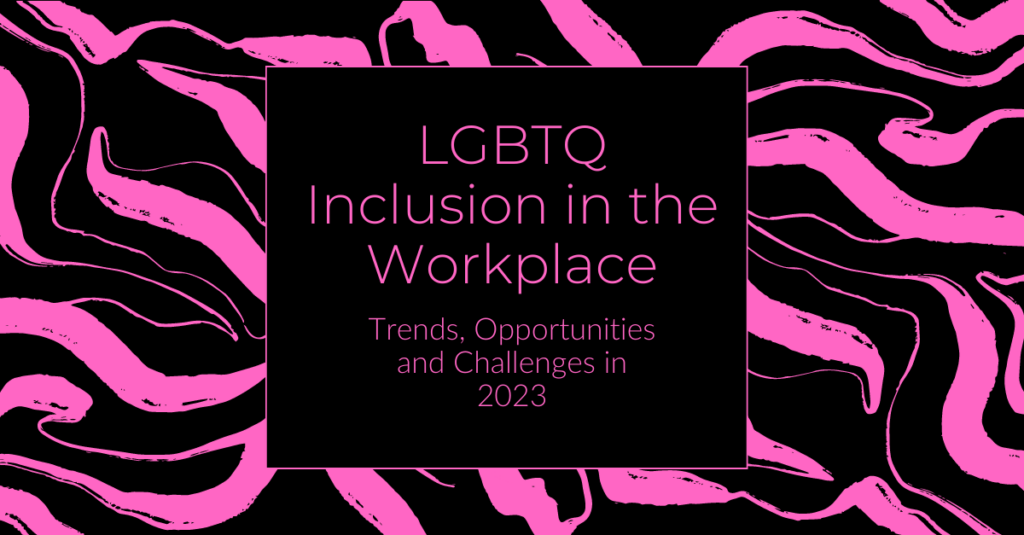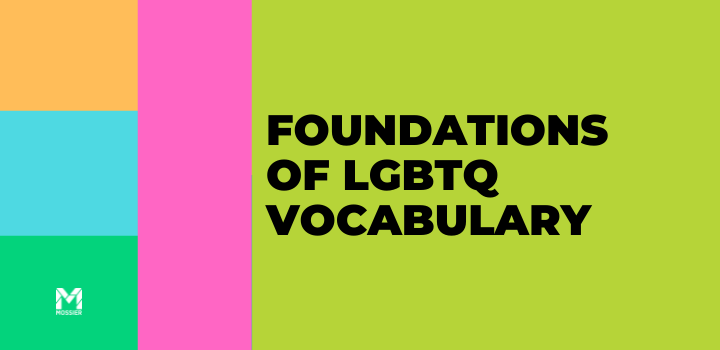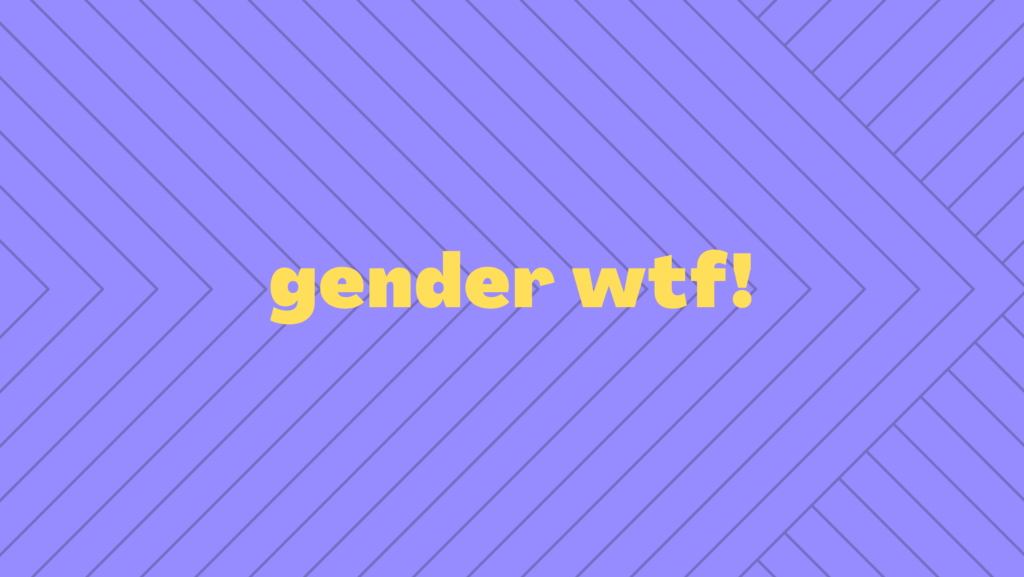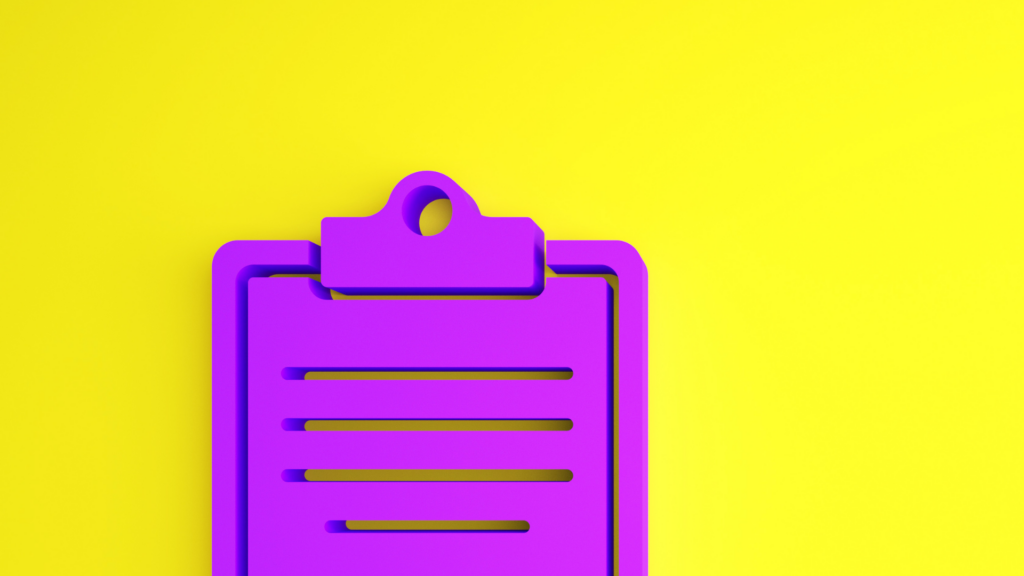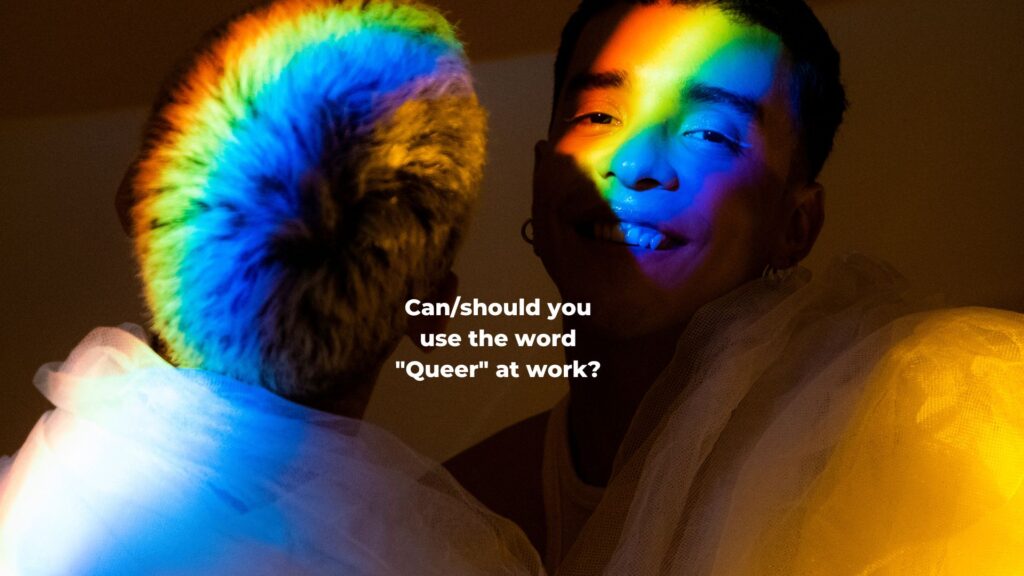
Can you use the word “Queer” at work?
The short answer is, yes. But it’s kind of complicated so let’s break it down.
The term “Queer” emerged in the 1600s as a synonym for “strange or peculiar.” By the late 1800’s it was also a slur leveraged at LGBTQ people. Some LGBTQ people, especially older generations, see “Queer” as a negative term and use terms like “Gay” or “Lesbian” or “LGBTQ.”
In the 1970’s and 80’s “Queer” was given new life among LGBTQ activists and academics. Cultural theorist, bell hooks defined “Queer” as not “about who you’re having sex with — that can be a dimension of it — but queer as being about the self that is at odds with everything around it.”
In other words, “Queer” is about pushing back on what society has defined as “normal.” Whether that be the “normal” way to express your gender, the “normal” way to form a family or any other norm.
In 2012, “Queer” appeared 85 times in The New York Times. In 2022, it had been used over 600 times. In the same period, use of “gay” has decreased from 2,228 to 1,531. The umbrella acronym “L.G.B.T.Q.” increased from 2 mentions to 714.
For some, “Queer” is a way to signal a particular political worldview. One that tends to be more anti-racist and anti-capitalist. The political edge to the word can make some people uncomfortable.
Applying a “Queer” lens to our workplaces can be part of a process of asking questions like:
❓ Who has the power to influence DEI outcomes? Why?
❓ Does this system benefit all people equally?
In 2024, it’s common for LGBTQ people to use the word “Queer” to simply imply that they are either not heterosexual and/or not cisgender. Queer can be used as an inclusive umbrella term for anyone LGBTQ+, people who are more anti-label and/or people who aren’t sure yet how they define their sexuality or gender identity.
The LGBTQ community has had to hustle to reclaim our language. We’ve had to reclaim “Gay” and “Lesbian”, and “Queer” is next on the list, driven by a younger generation that is going beyond the gender binary and viewing sexual orientation as a spectrum rather than a set of fixed boxes.
You can expect this to be an ongoing debate both within and outside of the LGBTQ community for years to come. An inclusive workplace doesn’t try to avoid this controversy, but rather leans into it and creates spaces for all generations and voices to be heard.
Best Practices for “Queer” at work
✅ Interchange your use of LGBTQ and Queer in written and verbal communications
✅ If “Queer” is a new term for your workplace, provide a disclaimer up front for why you’re using it
✅ Make “Queer” a part of LGBTQ allyship education
✅ Regularly check in with your LGBTQ employees and ask what terminology feels the best for them
✅ I know we love the convenience of the L.G.B.T.Q acronym but let’s also just say GAY, LESBIAN, BISEXUAL, TRANSGENDER and QUEER. These are not dirty words.
✅ Include an option for “Queer” on voluntary self-ID and forms that ask for sexual orientation and gender identity
For Allies who are unsure about what language to use
If a co-worker has made it known that they are a member of the LGBTQ community, it’s generally appropriate to ask how they identify. It makes sense that this could feel uncomfortable to ask about at first. In actuality, LGBTQ identities are just one of the many things we share at work as we build relationships. We ask each other to share details about our families, favorite foods, what Netflix show we are currently binging and more. LGBTQ identities don’t need to be a taboo subject. The key is respectful language. For example, you could say:
“I want to make sure I am being as inclusive as possible with my language. What acronym or term are you using these days to describe people who are lesbian, gay, bisexual, transgender, etc.?”
“Is there any language in particular that you don’t find affirming or inclusive?”
“I’ve recently been learning that certain words like “Queer” can be controversial in the LGBTQ community. How do you feel about this term?”
Fear of saying the wrong thing often leads us to say the wrong thing. Lead with genuine curiosity and do your own research so LGBTQ colleagues don’t feel like they have to be a spokesperson for the entire LGBTQ community. You got this!

